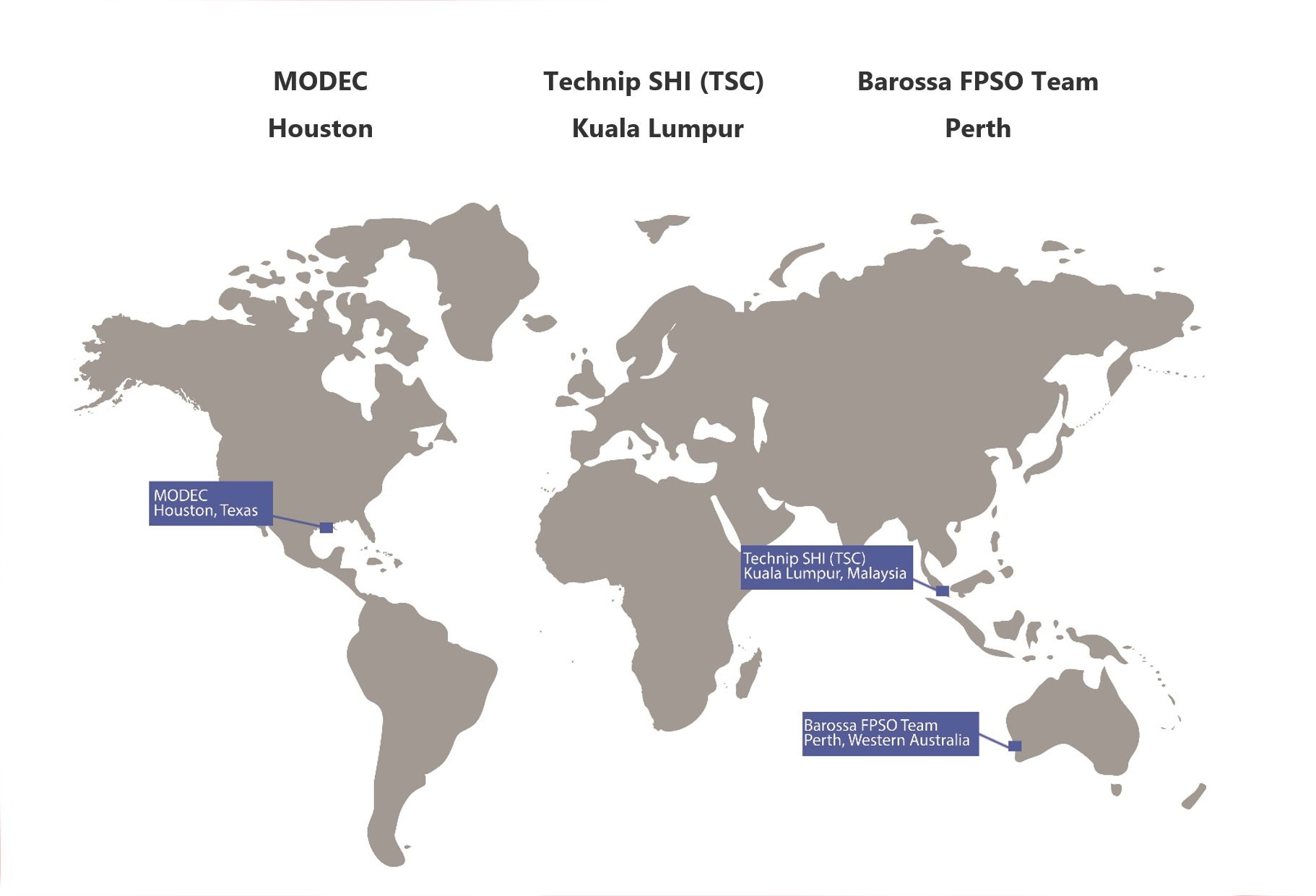
The Floating Production Storage and Offloading (FPSO) FEED competition is underway following a lengthy evaluation process that started in July 2017. A number of excellent bids were received and assessed, and on 1 June 2018, FEED contracts were awarded to: MODEC and to a consortium between TechnipFMC and Samsung Heavy Industries (TSC).
What does the FPSO FEED work involve?
All FEED bidders were given a base case concept design for the FPSO which includes the hull and topsides, the turret, and the mooring systems. SURF (Subsea Umbilicals, Risers and Flowlines) design work is separate to this contract.

The bidders were tasked with optimising the design and providing a preliminary cost estimate and schedule for supply as a lump sum. They were also asked to nominate their preferred shipyards (for module fabrication and integration of the hull, topsides, and turret) where the FPSO would be constructed. We requested all bidders to provide an EPCI option and a Lease Option.
EPCI vs Lease - What's the difference?
- EPCI: the contractor provides Engineering, Procurement, Construction and Installation (EPCI) of the facility which Barossa then takes ownership of; it's what's considered a 'turn-key' solution. This option is paid in progress payments, much like you would pay for a new house contract.
- Lease: the contractor owns the facility and is paid via a 'lease payment plan' starting once the facility is installed. The Lease owner typically operates the FPSO on our behalf.
How does the design competition work?
The winner of the FEED competition (either MODEC or TSC) gets the 'Execute' contract to build the FPSO. The Barossa Joint Venture will complete a combined technical and commercial evaluation of both contractors' proposals to select the winner. The FPSO execute contract will then be awarded, subject to receiving a positive Final Investment Decision (FID) for the overall project.
FEED Site Locations

At both site locations, a team of ConocoPhillips Barossa staff are working closely with the FEED contractors to support optimisation of their respective bids. Each site has project engineering, project controls, process engineering, marine engineering, electrical instrument and control engineering and operations representation.
FPSO Fast Facts
- FPSO topsides provide processing of the raw gas, to strip out condensate, water, carbon dioxide (CO2) and mercury for export to the DLNG plant
- Stabilised condensate is stored on the FPSO and offloaded to shuttle tankers
- FPSO will be permanently turret moored and built to withstand a 10,000-year storm
Under the current basis of design:
- FPSO will accommodate ~140 persons on board (POB)
- FPSO will process ~800 MMscfd (million standard cubic feet per day) of raw gas
- FPSO can store ~650,000m3 of condensate = 38 Olympic-size swimming pools
- FPSO topsides weigh more 30,000 tonnes = 250 road trains
- FPSO will be 330m length x 60m breadth = length of 2 Aussie rules football ovals
